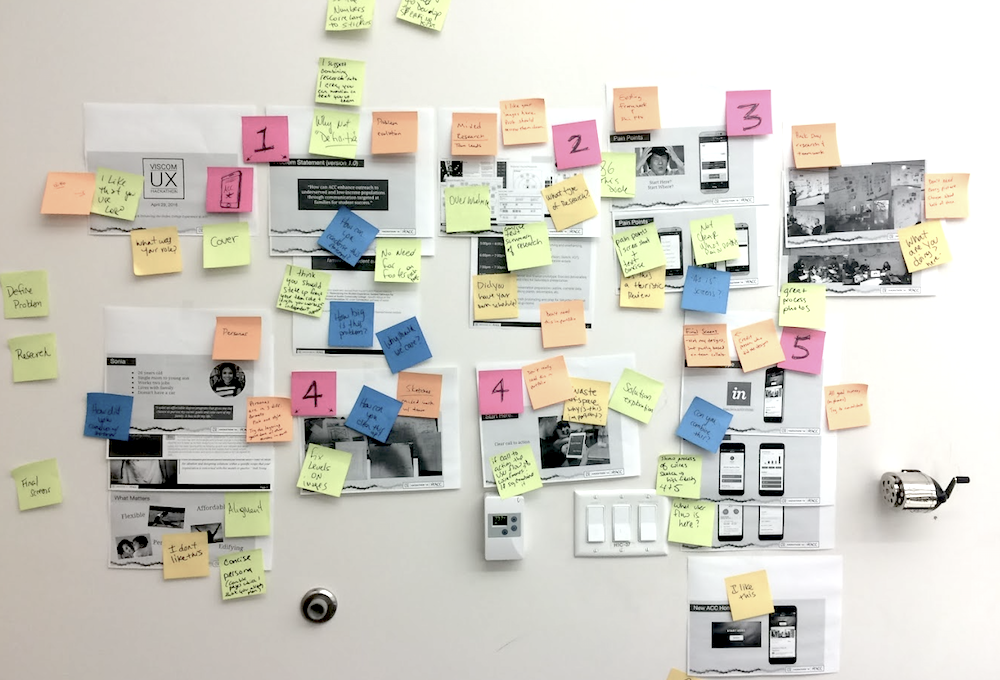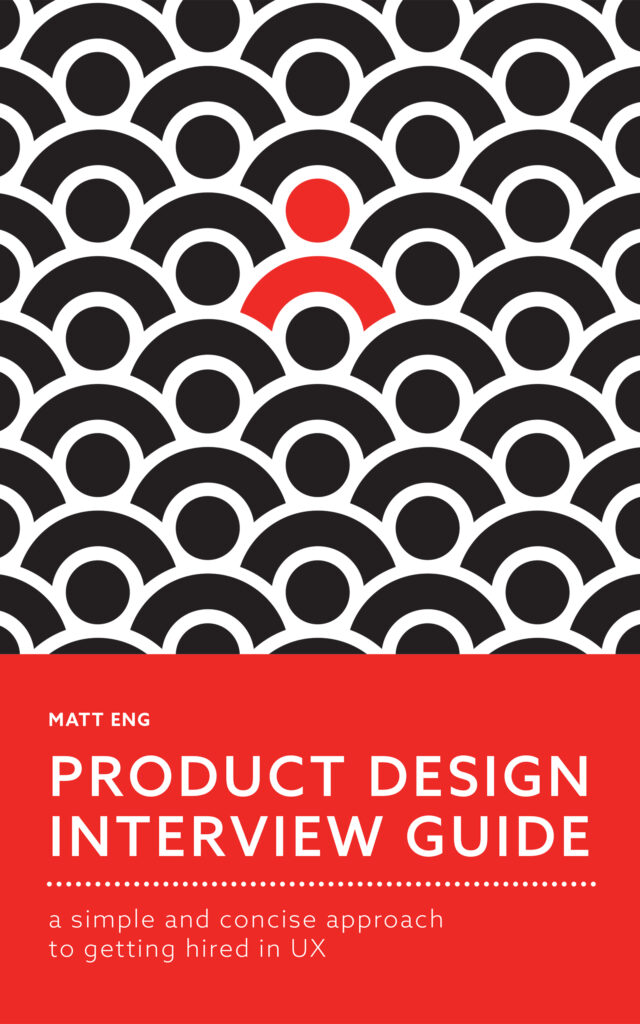In the Fall, I will be starting my third year teaching design at Austin Community College (ACC). My one class, Intro to UX, will be the first step for students who are considering a career in design. They are looking for reassurance that this is the right move for them. Most of all, they are craving a focused teacher who can confidently guide them through this initial part of their journey. This is why I treat my first class as one of the most important in the semester. For my colleagues who also teach, here are three steps that I have developed to ensure I set the right pace and message for my students on day one.
Make an Impression

In the class, stepping students through the practice of design
1. Start on time
On the first day, I immediately layout my expectations for day-to-day behavior as well as semester goals. I often say to them, “I will treat you exactly how I treat my team at work.” So, starting on the first day, I start on time. Just like in real life, the work day starts on time, meetings starts on time, and their designs are delivered on time.
2. Tell your origin story

Snapshot of my design student years. Noticed the confused look on my face.
Not long ago, I was also an ACC student. I took classes hoping for a career change. From my experience as a student and now a teacher, I found that about half of the class come from similar backgrounds. Making this connection gives me license to tell them that I worked through all of the struggles of daily life they will experience (i.e. juggling full time or part time work, class, homework, and paying bills). So, I understand what they will go through. I also tell them that I never missed a class, and made time to volunteer outside of class with AIGA and SXSW. On the weekends, I worked on side projects and honed my skills in HTML, CSS, and Javascript. In short, I hustled to move from student to junior designer to design lead in less than five years.
Set Short Term and Long Term Goals
3. Short Term: Focus on Collaboration
To be a team, I emphasize that everyone starts with humility, respect and patience. Be conscious of everyone’s time, and try to communicate value to the team. I remind them that not everyone is going to get this right immediately. Learning how to best contribute to the team takes time.
I emphasize that everyone starts with humility, respect, and patience.
I structure my class so that I am not the single source of information. It is my responsibility to break down the traditional teacher / student model where the students are passive about their education. I am less a lecturer and more a guide. One of the ways I illustrate this idea is to never directly answer a question. Instead, I repeat the question to the rest of the class. This opens the discussion up to everyone else. In the beginning, this frustrates some students, but the long term lesson is to encourage sharing and to build their confidence as future design experts.
4. Long Term: Outline Expectations
To give the students the chance to voice their expectations, I do a quick ‘Hopes and Fears’ exercise. This is something that I have adopted from IBM, and is an easy way to surface expectations and assumptions. Students can quickly jot down on Post-it®Notes what they wish to achieve with this class and what worries them. You can then address what hopes are within scope of this class and what fears can you quickly dispel or work on over the course of the semester. If you’re looking for more workshop activity ideas, check out my post on getting better feedback.
The classroom is place where you can challenge students and nurture their abilities, but only if they feel supported. For teachers, the first day is best time to set the tone of the class with clarity and structure. Be up front from the beginning with what you expect from them. The next challenge is stay consistent with your conditions.

